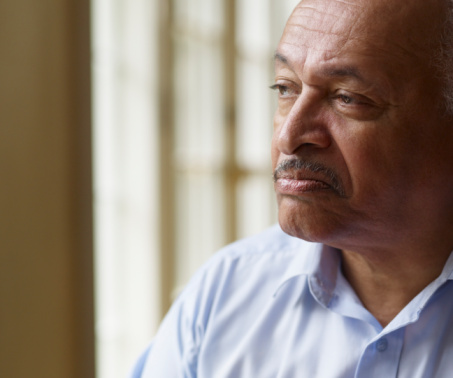
As a 64-year-old man living on the streets of Oakland, James is one of many older Californians who are homeless and have significant health issues.
James, whose name has been changed to protect his confidentiality, has had a stroke and spinal problems, leaving him with mobility limitations. He needs assistance with personal care, meal preparation and other tasks of daily living. Without this assistance, he is at high risk of landing in a nursing home, a costly and unnecessary outcome.
These days, he stays with his niece sometimes, who helps him with his activities of daily living. But James feels guilty about accepting her help when he can’t contribute financially. He worries about taking time away from his niece’s other jobs that she relies on to make ends meet. Because of this, James stays for a few days at a time at her home, and then goes back to living on the streets.
Like so many others experiencing homelessness, James needs a stable living situation. In order to ensure he gets help with his health issues, he also needs In-Home Supportive Services (IHSS).

IHSS is California’s major in-home care program for people with disabilities. IHSS allows an eligible person to hire a caregiver to provide personal care and other essential services so that person can live safely in their own home. The program is meant to prevent unnecessary institutionalization.
But what happens when the person who needs the care doesn’t have a home where services can be provided?
As the face of homelessness in California changes, so do the needs of those who are experiencing it. Approximately half of the more than 93,000 single adults who are homeless in California are 50 and older. These adults are often in poorer health than their housed contemporaries. Many homeless seniors have multiple chronic illnesses and significant functional and cognitive impairments. Unsurprisingly, homelessness exacerbates impairments, which can complicate efforts to house people.
James’s story illustrates the significant challenges facing homeless older adults with disabilities, but also points to a potential solution. Like many older adults experiencing homelessness, James has connections to friends and family, with limited access to housing.
What James doesn’t have is a bridge to turn a sporadic housing and care arrangement into a permanent one.
IHSS can be that bridge.
If James were to receive IHSS, he would have the care he needs to stay safe and remain independent. If James’s niece worked as his IHSS provider, she will be paid for that work, stabilizing her financial situation. James wouldn’t feel like he has to return to homelessness to avoid burdening her.

In this scenario, once James had a stable housing situation, he would be more likely to access medical care and manage his chronic condition, instead of living in potentially dangerous and unhealthy environments. With housing and care for his functional impairments, James would be at a lower risk of requiring costly institutional care.
Using the IHSS program to help re-house currently homeless older adults will take vision. First, will we need to think about the way we implement the program now that discourages or denies access to these older adults. For example, currently a county will not take an application if a potential recipient does not have an address of residence.
To remove this barrier, counties could begin asking homeless applicants if they will have an address where they could live if IHSS was provided. This change does not require a change in regulation or law—instead it requires a change in procedures.
Next, we will need help homeless applicants through the IHSS application process, and potentially hire people to assist them. The IHSS program does not have the resources to serve as case managers. However, it is likely that in order to apply successfully for the program, homeless older adults will need additional assistance. This will require working with community and county partners to identify housing navigators, case managers and social workers who we can work with homeless older adults as they navigate the IHSS application.
We will also have to think outside the box and determine if statutory or regulatory changes are needed and appropriate. Older adults with disabilities who are exiting homelessness have unique challenges, and we can look at which laws and policies hinder rather than help them. This may include finding ways that IHSS can help homeless older adults who don’t have family and friend connections.
Changing the way people think about housing homeless older adults will take time and persistence. Systems, and the people who work in them, do not change overnight. But the reward of successfully housing vulnerable older adults is worth it.
Claire Ramsey is a senior staff attorney at Justice in Aging. Margot Kushel is an internal medicine physician, professor of medicine in the Division of General Internal Medicine at the Zuckerberg San Francisco General Hospital and Trauma Center, and a core faculty member in UC San Francisco’s Center for Vulnerable Populations.






You must be logged in to post a comment.